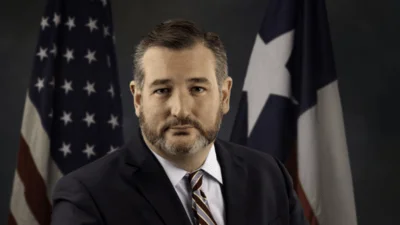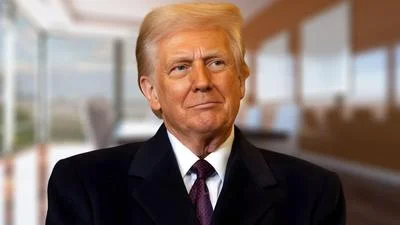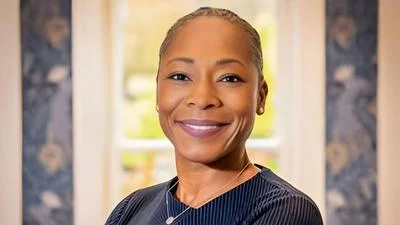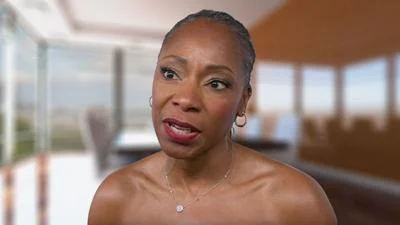The Congressional Record is a unique source of public documentation. It started in 1873, documenting nearly all the major and minor policies being discussed and debated.
“CONGRATULATING COLUMBUS, OHIO, ON WINNING THE SMART CITY CHALLENGE” mentioning the U.S. Dept. of Transportation was published in the Senate section on pages S4539-S4541 on June 23, 2016.
The publication is reproduced in full below:
CONGRATULATING COLUMBUS, OHIO, ON WINNING THE SMART CITY CHALLENGE
Mr. PORTMAN. Mr. President, I rise to join my colleague from the other side of the aisle, Senator Brown, who came to the floor earlier to congratulate Mayor Andy Ginther of Columbus, OH, and the people of Columbus, OH, and Central Ohio for a big victory this week. We won the Federal Department of Transportation's Smart City grant competition. This is something we have been working on for months. It is a big deal to us in Central Ohio. It gives us the opportunity to get $40 million in terms of a grant from the Department of Transportation to be a model city and also in combination with another grant of $10 million from Vulcan Corporation and $90 million that has been raised in the private sector--that is a total of about $140 million to reshape transportation in Central Ohio to create more economic growth for the citizens of Central Ohio and to be a model not just for Ohio but for the rest of the country on how we can use smart transportation to help create economic growth and opportunity.
I want to thank U.S. Secretary of Transportation Foxx for getting this decision exactly right. As I have said to Secretary Foxx about this competition over the past several months, I believe this is the right investment for our tax dollars. I believe Columbus is the right city. I believe we have done all the right things to be the proper recipient for this. I was honored to help set up meetings between Secretary Foxx and Mayor Andy Ginther. Secretary Foxx was always a thoughtful and respectful listener, and ultimately he made the right decision.
It was a tough competition. We had 77 other cities submit applications, and among the finalists were some very impressive cities, very innovative cities-- Austin, Kansas City, Denver, Pittsburgh, Portland, San Francisco.
It is easy to see why the right choice was to invest in Columbus. It is the fastest growing city in the Midwest in terms of jobs and in terms of population. It is one of the top seven centers in the country for foreign trade now.
By the way, that places a lot of pressure on our transportation system with this growth and with the increase in trade. There is a need for us to be sure our infrastructure keeps up with that success. This Smart City grant will help us ensure that happens.
I thank and commend the more than 100 organizations from Central Ohio that were part of this that expressed interest in working with Columbus on improving this infrastructure--organizations such as the Battelle research institute, the Ohio State University and their research on transportation, Clean Fuels Ohio, and the IBM Analytics Data Center. The Ohio State University had other departments involved in this, as well, in terms of engineering and so on, and dozens of others.
I also thank the leadership of the Columbus Partnership. Alex Fischer did a terrific job of bringing the business community together on this. I mentioned that they also have put $90 million of private sector investment into this. It is clearly one where the Federal dollars are being leveraged and more than matched.
I convened a meeting in Columbus several weeks ago at the Ohio State University Center for Automotive Research with many of these organizations that are part of this grant application. We talked about the need not just to work together on this grant but to ensure that Columbus and Central Ohio were on the map in terms of being centers for transportation excellence. We have some of the companies there, such as Honda and some of the suppliers, but we also have a lot of the research folks there and a lot of people who are interested in making sure the community becomes more prosperous by helping to move people.
It is almost as though physical mobility through transportation is part of economic mobility in Columbus. We see it that way. I think it is absolutely true.
I was pleased to lead in a letter from the entire Ohio delegation, along with Sherrod Brown and all of my colleagues in the House--
Democrat and Republican alike--in support of this effort. It was bipartisan. It was from the entire State. We were unanimous that Columbus is a sound investment that the Federal Government ought to make.
I thank Mayor Andy Ginther for taking the leadership role in getting this done. It was a team effort and a good example of how the public sector and the private sector can work together to help move our country forward--in this case, to give Central Ohio the chance to show how to move the country forward literally in terms of our transportation movement.
The credit ultimately goes to the city of Columbus. They will put that $140 million to good use, improving our infrastructure, spurring economic development and jobs. It is a proposal to form a partnership with the Central Ohio Transit Authority, the Mid-Ohio Regional Planning Commission, the Ohio Department of Transportation, Ohio State's Transportation Research Center, which I talked about earlier, and other partners in a five-part strategy, a very specific strategy--access to jobs, logistics, connecting visitors and tourists, connecting citizens and sustainability.
Let me briefly talk about some of these parts of the strategy. As I mentioned, we are creating a lot of jobs in Columbus with these new jobs. We have to be sure workers can commute easily and safely. We are going to study ways in which to move people, not just from suburb to suburb but also to ensure that people who are living in neighborhoods that have high rates of poverty have an access to jobs through the transportation improvement. We have a neighborhood in Columbus called Linden. It is one of the neighborhoods that will be particularly impacted positively by this improvement. The Linden neighborhood has its challenges.
I visited many neighborhoods in Columbus that have challenges, despite the economic growth we talked about. Franklinton is one and South Side is another. We talked about our efforts to spur economic growth, how to fight drug abuse, how to help people who deserve a second chance get one, and how to bring jobs to those communities. The one thing I hear about is the difficulty with transportation--how to literally find a job and then get to that job. People don't have cars, and they have difficulty finding the bus routes that work for these jobs. Unfortunately, some of the jobs are not close to these neighborhoods. This is an opportunity, through this new innovative transportation plan, to connect people to the jobs that are there. By making it easier for residents to travel to and from jobs and schools, we can improve the future of these communities and these families.
Credit is another issue that this proposal will help with. A lot of people who live in these neighborhoods have lack of access to credit. Think about it. Whether it is getting on the Metro bus or using some other form of transportation, such as the car2go or other transportation methods, credit is really important. This project will include looking for innovative ways to bring people off the sidelines and enable them to get around easier by providing credit for transportation.
Columbus also plans to use the grant funds to improve travel information and broadband Internet access and to deploy self-driving cars to connect the East Transit Center to local employers.
Columbus has one of the only cargo-dedicated airports in the world. A lot of freight moves through Central Ohio. We have the most truckstops of any State in the union. Some 60 percent of U.S. manufacturing facilities and 50 percent of U.S. consumers can be reached within a day's drive of Columbus. So it is a big transportation hub.
I have met with a number of companies, such as Avnet, which anticipates more and more trucks on the road to and from the Rickenbacker Inland Port--again, this is our airfreight center for Columbus--because of this continuing growth. The city of Columbus plans to build a smartphone app for trucks with real-time traffic conditions and routing data for delivery of freight to better ensure efficiency on our roads. This is good for everyone. It is certainly good not only for our transportation companies and trucks but also in terms of safety and efficiency and good for commuters and all drivers.
Another reason for the city's success is that we have so many people now visiting Columbus. Visitors spend about $5.7 billion every year in Columbus. That gives the city a total economic impact of $8.7 billion and supports 71,000 jobs for Ohioans. We need to be sure we continue to find ways to have the smart transportation project work with this increasing number of visitors.
We plan to work with organizations like Experience Columbus to build a smartphone app to provide real-time information relating to events in the city for visitors, parking, traffic, and transit options. By helping visitors get around easier, we can help improve their experience in the city and also make Columbus even more attractive to more visitors and stimulate increased economic activity and jobs.
These are some of the things that are going to happen as part of the Smart City grant. We also intend to focus on sustainability, and that would be to increase the use of cleaner ways of transporting people and goods. We will be expanding the electric-vehicle charging infrastructure and converting more of the city's bus system to compressed natural gas. The electric vehicles will reduce carbon emissions even as we are increasing transportation capabilities. This investment will not only have a positive impact on jobs but also on the environment. It is a win-win.
Again, I congratulate Secretary Foxx on making a good investment decision, one that will help Columbus make history and create opportunities for Ohioans, and, most importantly, congratulations again for all of Central Ohio and those who put together this incredible application. I look forward to working with them closely to ensure that the money is well spent and that this project does indeed become a model for the rest of Ohio and the rest of our country.
I thank the Presiding Officer, and I yield back my time.
I suggest the absence of a quorum.
The PRESIDING OFFICER. The clerk will call the roll.
The senior assistant legislative clerk proceeded to call the roll.
Mr. SESSIONS. Mr. President, I ask unanimous consent that the order for the quorum call be rescinded.
The PRESIDING OFFICER. Without objection, it is so ordered.
____________________








